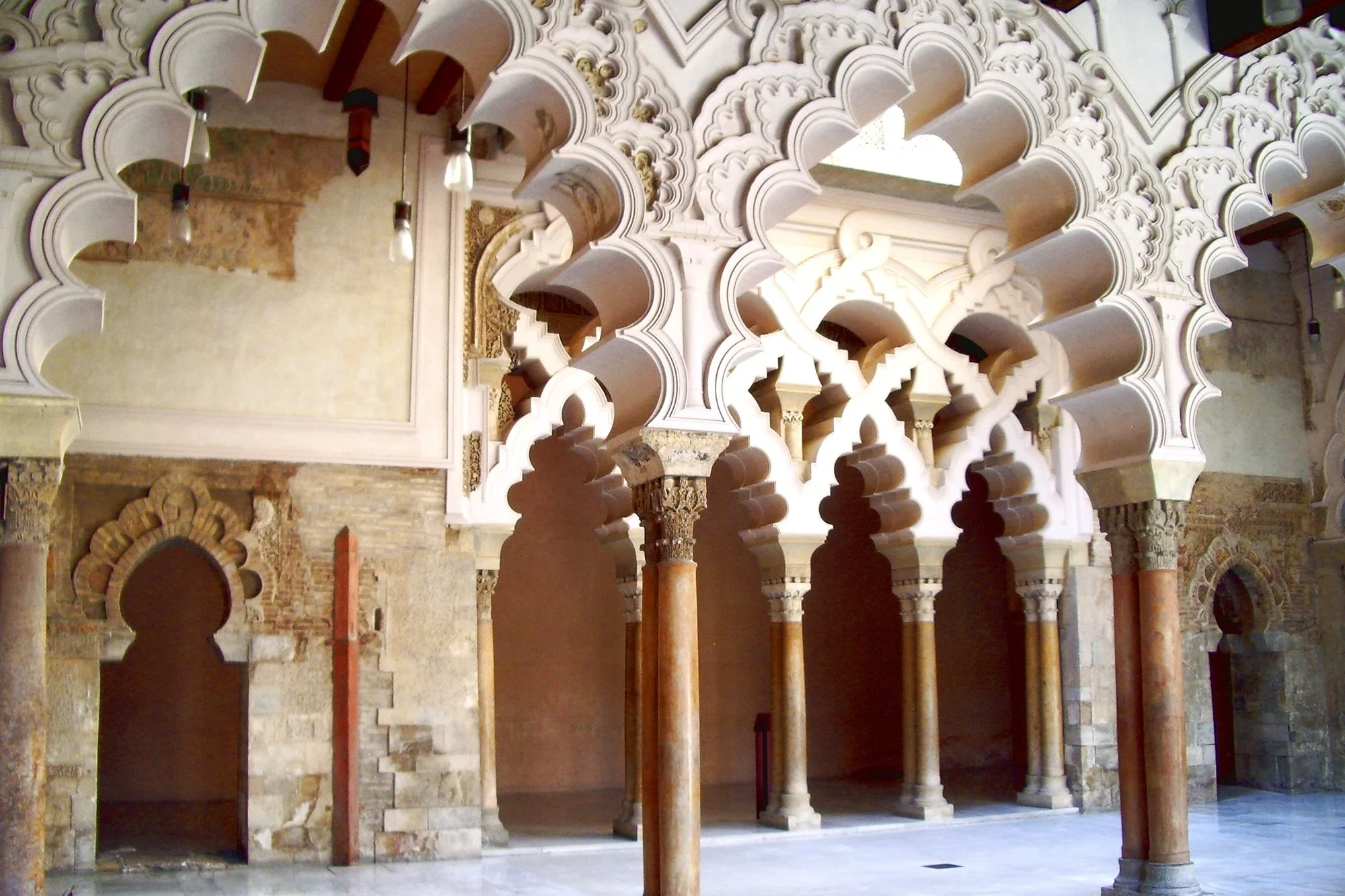
Cookie settings
We use our own and third-party cookies in order to offer our services, display videos, obtain statistics and offer personalized advertising.
For more information, please read our cookies policy.

It was built as a leisure residence of the Taifas Kings, under the rule of the king al-Muqtadir. It conserves part of its primitive fortified precincts.
Later, it was reformed by the Christian Kings and most of it reformation was carried out by Fernando el Católico becoming a Christian alcazar of royal ownership. The palace has a great rectangular courtyard, with reservoirs on both ends next to two side porticoes with Late Gothic and polilobed arcades.
The exterior towers are rounded except for the Troubadour Tower that should be highlighted because of its height and rectangular floor, of great dimensions and organized in several floors. In the Northern portico, there is a small oratory of octagonal floor, with the mihrab in one of its sides decorated with atauriques (Islamic decoration based on vegetal motives).
From Christian times, it conserves a staircase of honour, several rooms decorated with sober coffered ceilings, and especially the Throne Room, that could be placed among the best works of this kind.
Nowadays, this palace is the headquarters of the Regional Parliament of the Autonomous Community of Aragon.
Built: XI-XIX Century
Author: Anónimo
Style: Gothic, Mudéjar, Taifa
Category: Civil
Type: Palace - City Fortress
Address and telephone
Opening times
Prices
If you see any mistakes or want to add anything to this information, please contact us.

